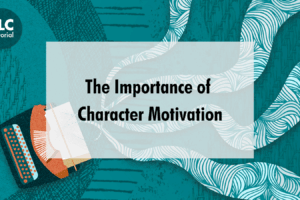How to Deal with Rejection
Here at TLC we talk to hundreds of writers, and anxiety about putting yourself and your writing out there is a common denominator – so if you’re worried about how to deal with rejection, know that you aren’t alone! We’ve compiled our top five tips, to help you move forwards with confidence in your writing journey.
- Fashion your armour, but wear it lightly
You don’t need a thick skin to be a writer. Often, it’s our thinner-skinnedness that makes us open to the world, able to observe it with compassion, empathy and imagination. Vulnerability can be a superpower if you’re a writer. But that doesn’t mean you need to force yourself through things that are simply too painful. Understanding your own limits is important. Ask yourself: what is the difference between a Learning Edge (the kind of discomfort that is necessary for growth to happen) and a Hard Limit (this is too much, it’s a clear no).
We talk a lot about resilience, but it’s important to understand that external factors will affect how resilient you are able to be. This means that simply planning to ‘be resilient’ won’t work. Try doing a quick audit before you make big decisions, based on how resilient you feel in the moment. This way you can be more responsive to where you are. You might, for example, want to create an email folder for agent responses. Feeling 8/10 resilient today? It’s a good day to open some of those emails. Feeling 3/10? It might be time to go for a walk instead. The emails won’t disappear, and you won’t miss your opportunity. Put your wellbeing first – that IS resilience. - Remind yourself of your strengths
We talk about this a lot with Being A Writer members and in our workshops where we think about how to cultivate the most authentic version of our writing selves. Key to this is remembering that rejection is part of the process, so it’s really important to have a clear sense of why you’re doing this in the first place, but also of what you know you are good at.
If you’re in a writing group, ask each person if they can tell you one thing they love about your writing. Type these up and keep these important words somewhere safe – you can even frame them and keep them somewhere in view if that helps, or add a list of things that you love about your own writing. This isn’t so much about rebutting rejection (they don’t get how much of a genius I am!), but about being clear about what you’re proud of, so that you can keep moving forwards in your learning journey. - Collect rejections, not acceptances
There are lots of examples online of writers doing really innovative, lovely things around their submissions journey; you can search around across social media to find them. One writer adds a colourful bead to a string each time she gets a rejection from an agent or publisher; she’s aiming to make a gorgeous necklace. Some writers even aim for a certain number of rejections per month. You’re not only cleverly re-wiring your brain to deliver a dopamine hit instead of a trigger response each time a ‘rejection’ lands, but you’re also learning to rejoice in the act of sending work out. OK, it’s a no this time, but in a parallel universe I have zero ‘rejections’ and am still in the same place. Look how far I’ve come now! - Be a writer outside of the thing you’re submitting
It can be really easy to get caught up in the rough and tumble of ‘submissions’, ‘rejection’s and ‘acceptances’. But this is just one part of the writing process, and it’s important that you don’t let it overshadow who you are as a writer. You are not a submissions machine. You are a writer. You are not this manuscript. You are a composite of all of the wonderful, intricate, beautiful imaginings that led you to that manuscript, and will lead you beyond it. Stay in touch with your writing outside of The Thing That Will Likely Be Rejected Before It’s Accepted. It’s not you. You are bigger and more than this. Make sure you keep your writing practice active, even if it’s in some small way, while you’re submitting work to agents and publishers. - Hold on to the joy
It’s so important to remember that it’s not you being ‘rejected’, it’s the manuscript. And there are multiple and complex reasons why something might be rejected: being ‘not good enough’ is a blanket reason when in reality it might be timing, a mismatch, a market factor, another book being similar on the agent’s current list… According to our research, around 1% of everything being submitted to agents and publishers ends up on a bookshelf. On the one hand, this can sound dispiriting. On the other hand, how incredible is it to be part of this vast universe of hopeful creativity, of bravery and courage, of steadfastness and persistence and determination? Don’t forget that you are doing this not to prove you are a writer, but because you’re already a writer. If you start to feel that the process is becoming too overwhelming or damaging, STOP. Take a breath. Remind yourself why you’re doing this. (Re)find the joy in the process. You are a writer! Don’t forget to celebrate this.
Need more inspiration? We have a blog on How to Deal with Rejection with literary agent Catherine Cho (Paper Literary) which you can listen to if you’re a member of Being A Writer here. If you would like some more hands-on help to build confidence and momentum, we are currently enrolling writers into our January Amplify programme, a 12-week group coaching programme where we prioritise YOU. Find out more here.








